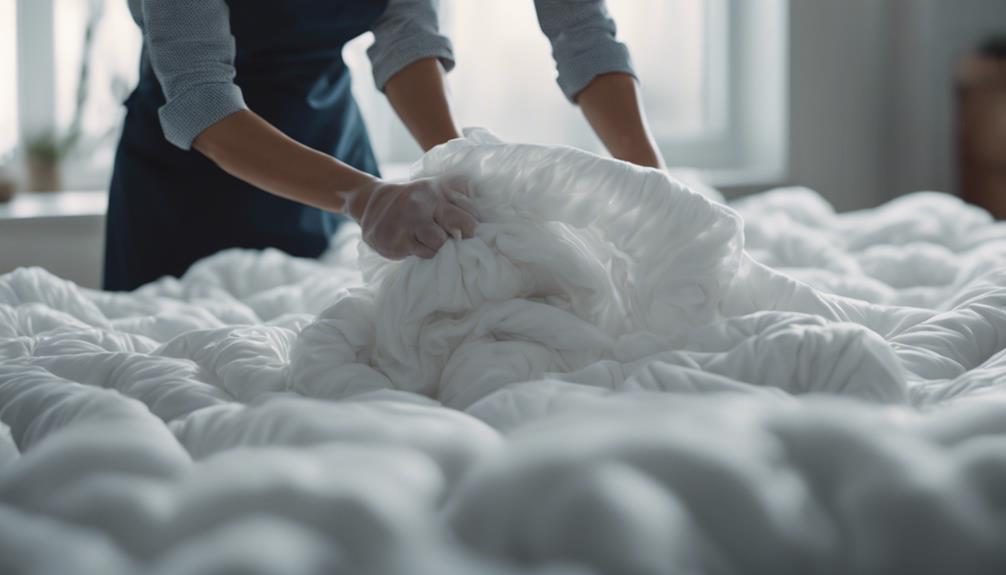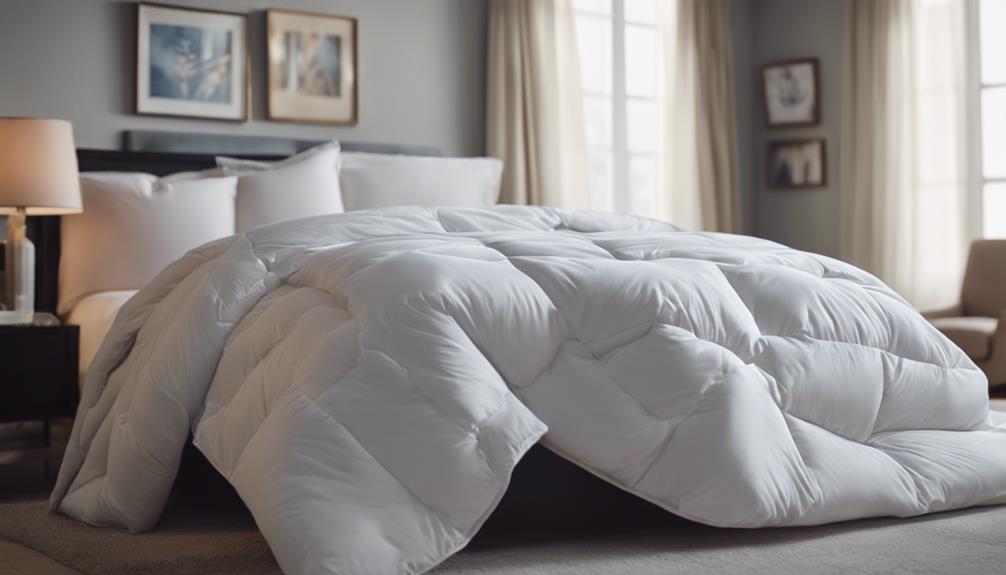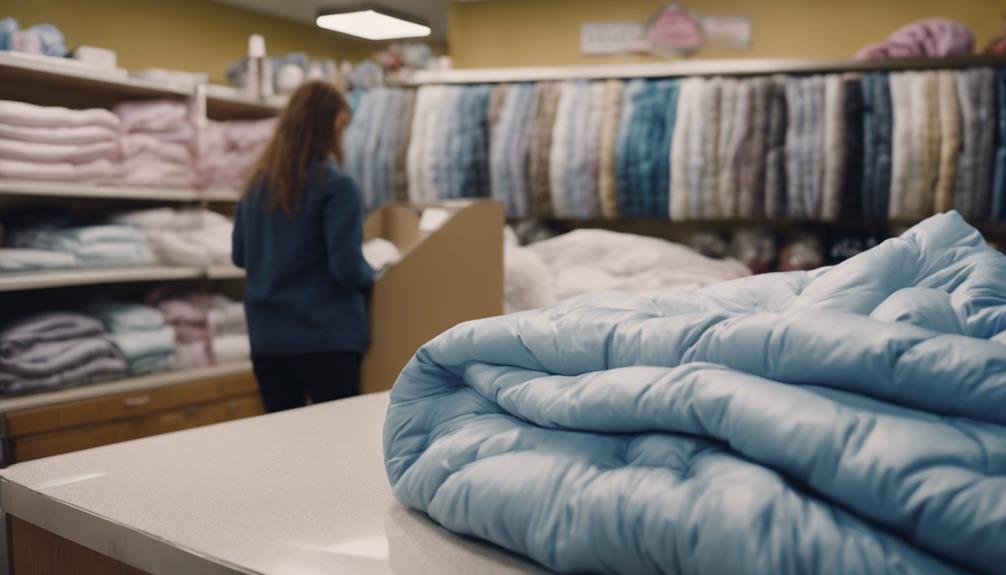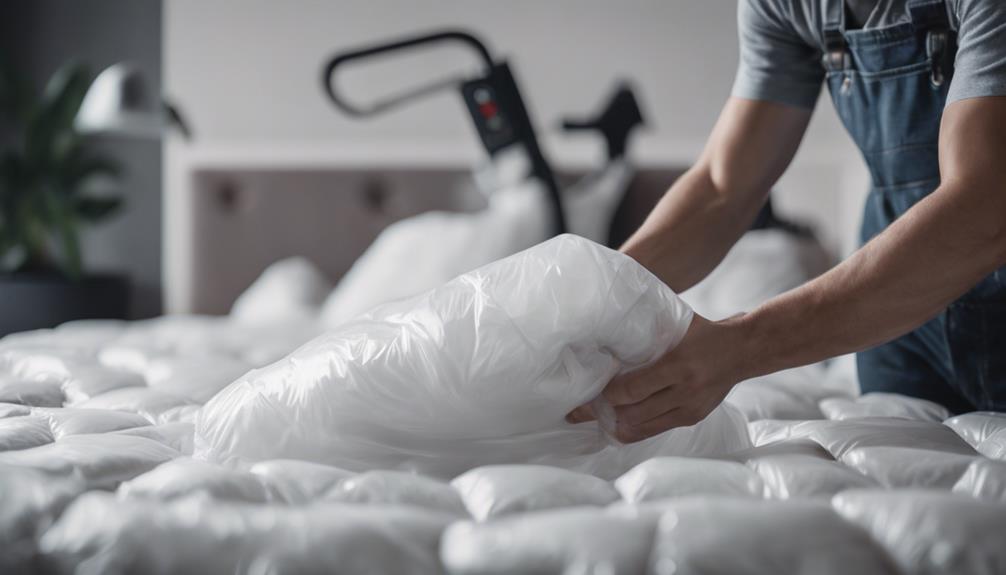At a dry cleaning establishment, we have the capability to thoroughly clean a comforter utilizing a specialized process. This professional laundering procedure includes inspection, pretreatment for any stains, cleaning in solvent tanks using safe solvents, and meticulous drying to ensure the fabric’s quality is maintained. This technique is particularly suitable for delicate fabrics such as wool, silk, cashmere, or down comforters. Dry cleaning helps preserve the colors, prevents shrinking, and retains the comforter’s original shape. By choosing this method, you are ensuring a thorough clean that promotes a healthier sleeping environment. Entrusting experts to handle the cleaning process can extend the lifespan of your comforter.
Key Takeaways
- Dry cleaners can effectively launder comforters using safe solvents.
- Dry cleaning preserves comforter colors, shape, and fit.
- Specialized dry cleaning process includes inspection, pretreatment, and specific drying.
- Machine washing may damage delicate fabrics like wool, silk, or down.
- Follow care label instructions for proper maintenance and longevity.
Dry Cleaning Process for Comforters
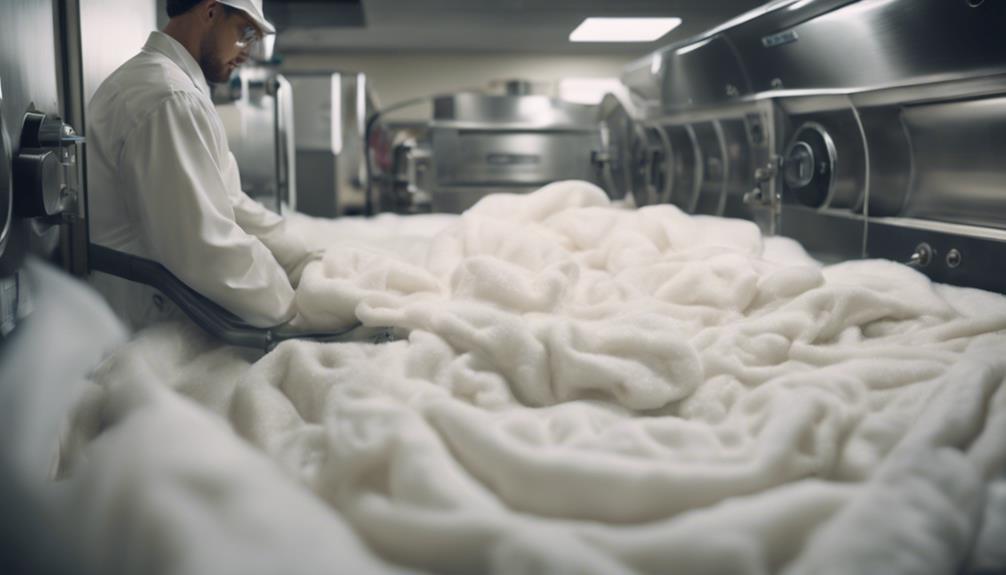
Dry cleaners typically handle comforters by following a professional laundering process that involves thorough inspection and treatment before cleaning in a solvent tank. The examination is vital to identify any stains or damages that require special attention during the cleaning process.
After inspection, any stains or heavily soiled areas are pretreated to guarantee effective removal. Comforters are then placed in a solvent tank where they're gently cleaned using safe solvents that are suitable for different fabric types. Drying temperatures are carefully monitored to prevent damage to the comforter and ensure proper drying. Once dry, the comforter undergoes finishing touches to make it look fresh and neat.
It's important to note that not all dry cleaners have the washing capabilities to handle comforters, so it's advisable to inquire about their specific services beforehand. The cost of dry cleaning a comforter can vary depending on factors such as size and material, typically ranging between $30 to $50.
Benefits of Dry Cleaning Comforters
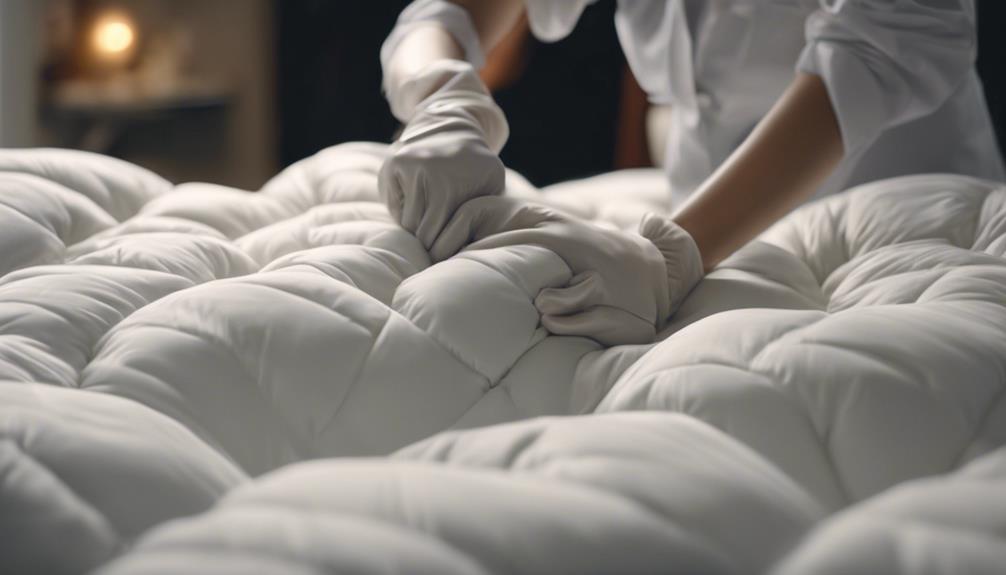
Regular dry cleaning of comforters offers several advantages beyond just cleanliness and convenience. By opting for dry cleaning for your comforter, you not only guarantee a thorough and deep clean but also enjoy a range of benefits that contribute to the longevity and quality of your bedding. Let's explore some key advantages of choosing dry cleaning over washing your comforter at home:
| Benefits of Dry Cleaning Comforters | |||
|---|---|---|---|
| Protects Colors | Preserves Shape | Prevents Shrinking | Deep Clean |
| Dry cleaning safeguards the vibrant colors of your comforter, preventing fading even after multiple cleanings. | Dry cleaning helps maintain the original shape of your comforter, preventing lumps and twists that can occur in a washing machine. | It averts shrinking, ensuring your comforter continues to fit properly and provide warmth. | Dry cleaning effectively removes dust mites, skin cells, and oil for a deep clean, promoting a healthier sleeping environment. |
These benefits collectively contribute to not only cleanliness but also the overall quality and comfort of your beloved comforter.
Machine Washing Vs. Dry Cleaning Comforters
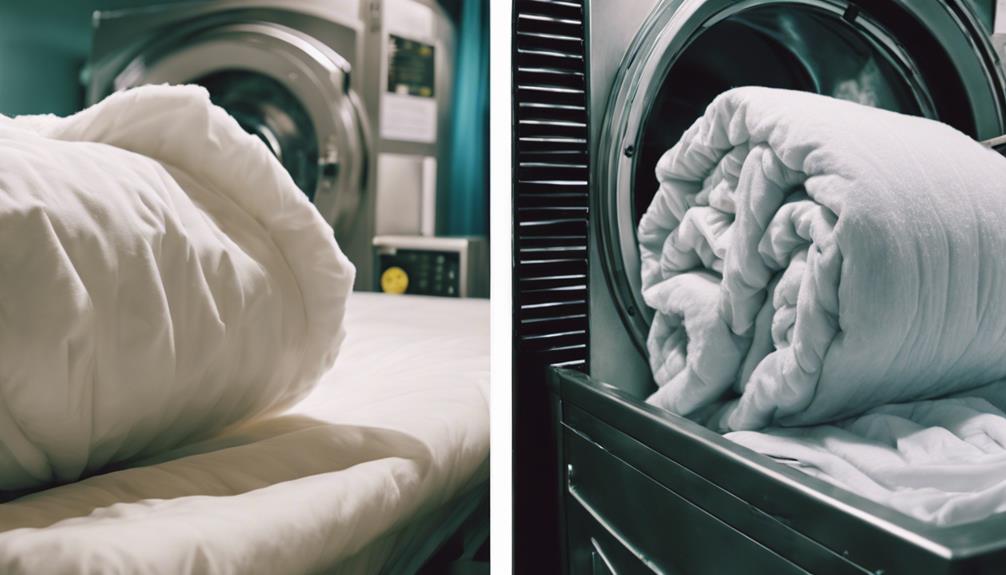
When considering the best method for cleaning your comforter, it's important to weigh the advantages and differences between machine washing and dry cleaning.
Dry cleaning is recommended for delicate materials like wool, silk, cashmere, or down comforters. The process includes inspection, pretreatment, cleaning in a solvent tank, drying at specific temperatures, and finishing, taking about 3-4 hours. It utilizes chemical solvents that are gentle on fabrics.
On the other hand, machine washing can potentially damage certain fibers in comforters and should only be done if permitted by the care label. If machine washing is suitable, use a delicate cycle with cold or warm water and low heat for drying.
Understanding the care requirements of your comforter is important in deciding between dry cleaning and machine washing to maintain the longevity and quality of your bedding.
Proper Care for Down Comforters
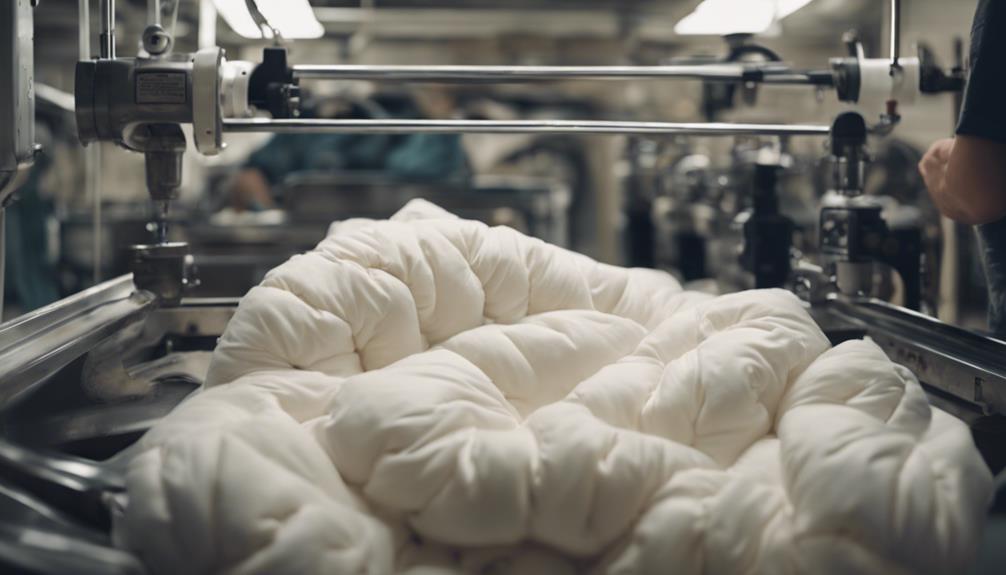
Taking proper care of down comforters is essential to guarantee their longevity and quality. To make sure your down comforter stays in top condition, consider the following care tips:
- Professional laundering: Opt for professional laundering over dry cleaning to avoid damage from harsh chemicals.
- Duvet cover: Use a duvet cover to reduce the frequency of washing your down comforter, helping to maintain its cleanliness.
- At-home washing: If you choose to wash your comforter at home, make sure you have a full-sized washing machine to properly clean and maintain it.
- Spot cleaning: For stains, spot cleaning is recommended to extend the time between full washings and preserve the quality of the bedding.
- Follow care instructions: Always refer to the care instructions provided with your down comforter to ensure you're washing it correctly and maintaining its quality.
How to Wash Dry-Clean-Only Comforters

To maintain the quality and appearance of dry-clean-only comforters, it's essential to utilize specialized cleaning methods provided by professional dry cleaners. When it comes to washing these delicate fabrics, dry cleaning is the recommended method. Following the care label instructions is vital to make sure the comforter is treated properly and to avoid any potential damage during the cleaning process.
Professional dry cleaners use gentle solvents that are safe for delicate fabrics, providing a thorough and safe cleaning process. These solvents are effective in removing tough stains and odors from comforters without compromising their integrity. By entrusting your dry-clean-only comforter to a professional, you can rest assured that it will be cleaned thoroughly and returned to you in pristine condition.
Frequently Asked Questions
How Much Does It Cost to Wash a Comforter?
Washing a comforter at a dry cleaner typically costs between $30 to $50. The price can vary based on factors like size and material. Opting for professional laundering over dry cleaning is often recommended for comforters.
Most dry cleaners offer this service, making it convenient for customers. Dry cleaning a comforter helps preserve its quality and cleanliness effectively.
Should a Down Comforter Be Washed or Dry Cleaned?
We recommend washing a down comforter instead of dry cleaning it to avoid harsh chemicals that can damage the down. Most dry cleaners can launder down comforters for $30 to $50, depending on size.
Using a duvet cover can help protect the comforter and reduce the frequency of washing. For washing at home, use a large machine or a laundromat, ensuring even balance.
Regular fluffing is essential to maintain the comforter's loft.
Is Dry Cleaning a Comforter Expensive?
Dry cleaning a comforter can vary in cost, typically ranging between $30 to $50. Factors like size, material, and location influence the price.
While dry cleaning is an option, it may not always be the most cost-effective method. Professional laundering is often recommended over dry cleaning, especially for down comforters that can be damaged by harsh chemicals.
Considering alternatives based on cost and material sensitivity is essential when deciding how to clean a comforter.
Where Can I Wash a Large Comforter?
When it comes to washing a large comforter, opting for a professional cleaner is a wise choice. Not all places can handle the size, so it's important to inquire beforehand.
Most dry cleaners provide laundering services for comforters, with prices varying between $30 to $50. It's recommended to choose professional laundering over dry cleaning to preserve the comforter's quality.
Always make sure the cleaner offers comforter services before bringing in your bulky bedding.
Should I Take My Comforter to a Dry Cleaner or Can I Wash It Myself?
If your comforter is labeled as dry clean only, it’s recommended to take it to professional dry cleaners for comforters. This will ensure that it is properly cleaned without risking damage. However, if it’s machine washable, follow the care instructions on the label for best results.
Conclusion
To sum up, when contemplating whether dry cleaners can wash comforters, it's crucial to take into account the type of comforter and its care instructions. Dry cleaning provides advantages such as safeguarding delicate fabrics and preserving the quality of down comforters.
Nonetheless, if your comforter is labeled as dry-clean-only, it's advisable to adhere to those instructions to prevent harm to the fabric. Always prioritize the longevity and quality of your comforter by selecting the appropriate cleaning method.
